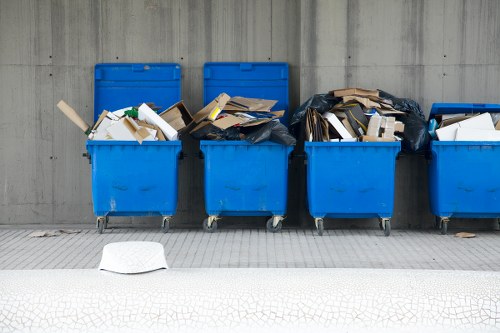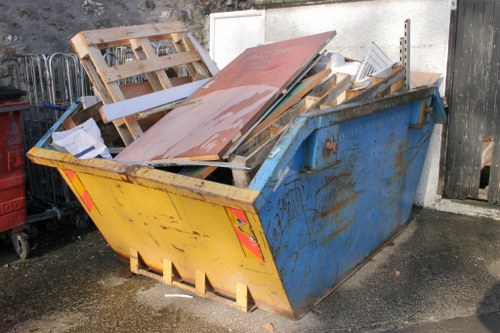Bed Disposal in Clearance Sucks

Disposing of an old bed during a clearance sale can be a frustrating and daunting task. Whether you're upgrading to a new mattress or simply decluttering your space, bed disposal often becomes a significant hurdle. This article explores the various challenges associated with bed disposal in clearance settings and offers practical solutions to make the process smoother.
One of the primary issues with bed disposal is the sheer size and weight of the furniture. Beds are bulky, making them difficult to transport and dispose of, especially in urban areas with limited space. Additionally, many clearance sales prioritize quick turnover, leaving little time for proper disposal planning.
Environmental concerns also play a critical role in bed disposal. Many beds contain materials that aren't easily recyclable, such as metal frames, springs, and various fabrics. Improper disposal can lead to environmental pollution, highlighting the need for sustainable disposal methods.

The Challenges of Bed Disposal
When it comes to disposing of a bed, several challenges can complicate the process:
- Size and Weight: Beds are typically large and heavy, making transportation difficult without the right equipment.
- Material Composition: Beds are made from various materials, some of which are hard to recycle or dispose of responsibly.
- Storage Constraints: Limited storage space can make it challenging to temporarily hold old beds before disposal.
- Legal Regulations: Local disposal regulations may restrict how beds can be discarded, adding another layer of complexity.
Addressing these challenges requires a strategic approach, especially during clearance sales when time and resources are limited.
Moreover, the emotional attachment to old beds can make disposal even more stressful. Many people associate their beds with comfort and personal space, making the decision to dispose of them emotionally charged.

Why Clearance Sheds Unique Problems
Clearance sales often aim to sell items quickly to make room for new inventory. This urgency can lead to several unique problems when it comes to bed disposal:
- Lack of Time: The rush to clear out old stock can result in inadequate disposal planning.
- Cost Constraints: Clearance budgets are typically tight, limiting the options for professional disposal services.
- Volume: High volumes of inventory can lead to an overwhelming amount of beds needing disposal simultaneously.
- Limited Access: High-traffic clearance venues might have restrictions on disposal methods due to space and safety concerns.
These factors make bed disposal during clearances particularly challenging, requiring efficient and cost-effective solutions.
Furthermore, the temporary nature of clearance sales means that the infrastructure for disposal may not be as robust as in regular retail settings.

Effective Strategies for Bed Disposal
To overcome the challenges of bed disposal during clearance, consider implementing the following strategies:
- Hire Professional Disposal Services: Professional services have the equipment and expertise to handle large, heavy items efficiently.
- Partner with Recycling Centers: Collaborate with local recycling facilities to ensure that materials are disposed of sustainably.
- Offer Discounts for Old Bed Returns: Encourage customers to return their old beds when purchasing new ones, streamlining the disposal process.
- Use Reusable Packaging: Opt for eco-friendly packaging that can be reused or easily recycled to reduce waste.
Implementing these strategies can significantly reduce the hassle of bed disposal, making clearance operations more efficient and environmentally friendly.
Additionally, planning ahead and allocating a specific budget for disposal can help manage costs and ensure that the process is handled smoothly.

Environmental Impact of Improper Bed Disposal
Improper bed disposal can have severe environmental consequences. Beds often contain non-biodegradable materials such as metal springs, wooden frames treated with chemicals, and synthetic fabrics. When these materials are not disposed of correctly, they can contribute to landfill overflow and pollution.
Moreover, the decomposition of materials like springs and certain woods can release harmful substances into the soil and water, adversely affecting ecosystems and public health.
By adopting responsible disposal practices, businesses and individuals can minimize their environmental footprint, contributing to a more sustainable future.
It's also important to educate employees and customers about the importance of proper disposal to foster a culture of environmental responsibility.
Cost-Effective Disposal Solutions
Managing bed disposal costs is crucial, especially during clearance sales where budgets are tight. Here are some cost-effective solutions:
- Bulk Disposal Contracts: Negotiate bulk deals with disposal companies to reduce per-item costs.
- Donate Usable Beds: Partner with charities to donate beds that are still in good condition, potentially qualifying for tax deductions.
- In-House Recycling Programs: Develop programs to disassemble beds and recycle materials internally, cutting down on disposal fees.
- Use Recyclable Materials: Choose beds made from recyclable materials to simplify the disposal process.
These solutions not only help in managing costs but also promote sustainability, aligning your clearance operations with eco-friendly practices.
Additionally, leveraging technology to track and manage disposal can lead to further cost savings and operational efficiencies.
Legal Considerations in Bed Disposal
When disposing of beds, it's essential to be aware of local regulations and legal requirements. Non-compliance can result in hefty fines and legal complications. Key considerations include:
- Waste Management Laws: Understand the specific laws governing the disposal of large furniture in your area.
- Recycling Mandates: Some regions require certain materials to be recycled rather than sent to landfills.
- Permits: Secure any necessary permits for transportation and disposal of large items.
- Environmental Regulations: Adhere to regulations aimed at minimizing environmental impact.
Staying informed and compliant ensures that your clearance operations proceed without legal interruptions.
Partnering with disposal companies familiar with local laws can help navigate these complexities efficiently.
Innovative Disposal Methods
Embracing innovative disposal methods can transform the bed disposal process during clearances. Some of these methods include:
- Modular Disposal: Disassemble beds into smaller, more manageable parts for easier transportation and recycling.
- Upcycling: Repurpose parts of old beds into new products, reducing waste and opening new revenue streams.
- Digital Tracking: Use software to track disposal processes, ensuring efficiency and compliance with regulations.
- Community Collection Drives: Organize local bed collection events to engage the community and streamline disposal.
These innovative approaches not only address disposal challenges but also promote sustainability and community engagement.
By thinking outside the box, clearance sales can turn a potential hassle into an opportunity for positive impact.
Benefits of Proper Bed Disposal
Proper bed disposal offers numerous benefits, including:
- Environmental Protection: Reduces landfill waste and prevents pollution.
- Cost Savings: Efficient disposal methods can lower overall costs.
- Space Management: Frees up valuable space for new inventory.
- Brand Reputation: Demonstrates a commitment to sustainability, enhancing brand image.
Emphasizing these benefits can motivate stakeholders to prioritize proper disposal practices during clearance sales.
Moreover, showcasing your eco-friendly disposal methods can attract environmentally conscious customers.
Implementing a Bed Disposal Plan
Creating a comprehensive bed disposal plan is crucial for effective clearance operations. Steps to implement such a plan include:
- Assessment: Evaluate the number of beds to be disposed of and their material composition.
- Strategy Development: Decide on the most suitable disposal methods based on assessment results.
- Partner Selection: Choose reliable disposal partners who align with your sustainability goals.
- Execution: Implement the disposal plan, ensuring all procedures are followed correctly.
- Monitoring: Continuously monitor the disposal process for efficiency and compliance.
Having a structured plan ensures that bed disposal during clearance is handled systematically and effectively.
Regular reviews and updates to the plan can help adapt to any changes in regulations or operational needs.
Technology Aiding Bed Disposal
Modern technology offers various tools to facilitate the bed disposal process. Innovations include:
- Disposal Management Software: Streamlines scheduling, tracking, and reporting of disposal activities.
- Automated Inventory Systems: Keeps track of beds approaching disposal, ensuring timely action.
- Recycling Technologies: Advances in recycling make it easier to break down and repurpose bed materials.
- Transportation Solutions: Efficient logistics software optimizes routes for disposal services, reducing costs and environmental impact.
Integrating these technologies can enhance the efficiency and effectiveness of bed disposal during clearance.
Staying updated with technological advancements can provide a competitive edge in managing disposal processes.
Case Studies: Successful Bed Disposal
Learning from successful bed disposal case studies can provide valuable insights. For example, a major furniture retailer implemented a comprehensive disposal plan during their clearance sales, partnering with local recycling centers and offering discounts for customers who returned their old beds. This approach not only streamlined the disposal process but also boosted customer satisfaction and brand reputation.
Another case involves a small retail shop that adopted modular disposal and upcycling methods, turning old bed parts into new products. This not only reduced waste but also created an additional revenue stream, demonstrating the benefits of innovative disposal methods.
These examples highlight the importance of strategic planning and innovation in overcoming bed disposal challenges.
By analyzing these case studies, businesses can adopt best practices tailored to their specific needs.
Future Trends in Bed Disposal
The future of bed disposal is leaning towards more sustainable and technologically advanced methods. Trends to watch include:
- Increased Recycling Efforts: Advancements in recycling technologies will make it easier to recycle complex bed materials.
- Circular Economy Models: Businesses will adopt models that emphasize reuse and repurposing of materials.
- Smart Disposal Systems: Integration of IoT and AI to optimize disposal processes.
- Consumer Awareness: Growing consumer awareness about environmental issues will drive demand for responsible disposal practices.
Staying ahead of these trends can help businesses adapt and thrive in the evolving market landscape.
Embracing these trends will not only improve disposal efficiency but also align businesses with global sustainability goals.
Conclusion
Bed disposal during clearance sales presents significant challenges, from logistical issues to environmental concerns. However, with strategic planning, innovative solutions, and a commitment to sustainability, these obstacles can be effectively managed.
By implementing the strategies discussed, businesses can streamline their bed disposal processes, reduce costs, and enhance their environmental footprint.
Don't let bed disposal hinder your clearance success. Contact us today to learn how we can help you manage your disposal needs efficiently and responsibly.